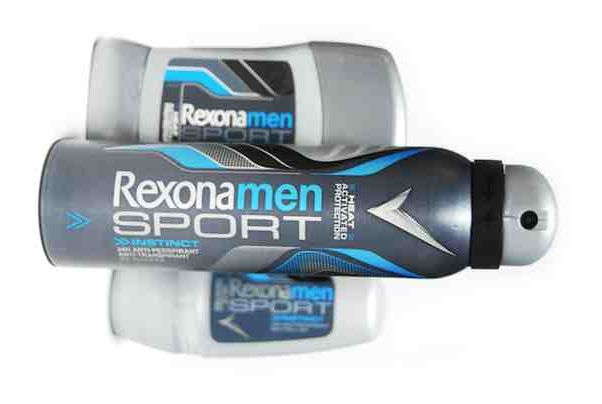
Unilever’s generic competitive strategy builds competitive advantage by satisfying consumers’ specific needs and preferences. In Michael Porter’s model, generic strategies are used to ensure the competitiveness necessary for business growth and organizational resilience. In the case of Unilever, competitive advantage is based on product development approaches that integrate research to address market needs. In addition, the company maintains growth through a suitable combination of intensive growth strategies. Unilever shifts the prioritization of its intensive growth strategies based on the condition of the consumer goods market. The overall combination of such generic competitive strategy and intensive growth strategies ensures Unilever’s continuing success in its global operations.
Using a generic strategy that directly addresses market needs, Unilever maintains competitive advantages in the global consumer goods industry. These competitive advantages, such as the ones described in the SWOT analysis of Unilever, enable the company to apply intensive growth strategies that match business needs and support business expansion.
Unilever’s Generic Competitive Strategy (Porter Model)
Unilever uses broad differentiation as its generic strategy for competitive advantage. The focus of this generic competitive strategy is on features or characteristics that make the company’s food and non-food consumer goods stand out against competitors, including Procter & Gamble (P&G), Colgate-Palmolive, PepsiCo, and Coca-Cola. For example, Unilever produces personal care products, like Dove Cream Bars, to satisfy consumers’ need for soaps that are not harsh or drying. Despite their higher selling prices, such Unilever products are competitive because they stand out from many soaps that focus more on cleaning than moisturizing. In this strategy, the company attracts customers to specially designed products. Thus, such a generic competitive strategy aligns with Unilever’s mission statement and vision statement, which aim to increase vitality in consumers’ lives, and to support global sustainability, respectively.
A strategic objective based on the generic competitive strategy of differentiation is to grow Unilever through intensive efforts in product development. This objective focuses on developing products that stand out from the competition and attract customers. On the other hand, a financial objective linked to this generic strategy is to grow Unilever’s revenues in developing countries, which offer high growth opportunities. These opportunities are identified in the PESTEL/PESTLE analysis of Unilever. The combination of these strategic objectives leads to competitive advantages reflected in products and a strong financial performance in the consumer goods market.
Unilever’s Intensive Growth Strategies (Ansoff Matrix)
Market Penetration (Primary Strategy). Unilever applies market penetration as its primary intensive growth strategy. In this intensive strategy, the company increases its sales volume to improve revenues and corresponding business growth. For example, in the home care market, Unilever aggressively sells its products in current markets, such as the United States and Canada. Aggressive efforts increase the company’s ability to capture customers away from competing home care firms. Unilever successfully applies this intensive growth strategy by using the generic competitive strategy of differentiation to make its products more competitive and attractive than others. A strategic objective linked to this intensive strategy is to grow the business through aggressively marketing Unilever products in the global consumer goods market.
Product Development (Secondary Strategy). Product development functions as a secondary intensive strategy that Unilever uses for business growth. The company applies this intensive growth strategy by introducing new products that address consumers’ needs. For example, entirely new or new variants of Unilever’s personal care products are released over time to maintain or increase the company’s market share. This intensive growth strategy is in line with the company’s differentiation generic strategy for competitive advantage in the consumer goods industry. For instance, differentiation requires product uniqueness, which is applied in Unilever’s product development processes. This intensive strategy leads to the strategic objective of growing the company through continuous product innovation. Such innovation improves the product mix in Unilever’s marketing mix or 4P.
Diversification (Supporting Strategy). Unilever uses diversification as a supporting intensive growth strategy. This intensive strategy focuses on establishing new businesses to grow the company. For example, to achieve diversification, Unilever acquires other businesses over time, such as the acquisition of the personal care business of Sara Lee Corporation in 2009-2010. The generic competitive strategy of differentiation supports this intensive growth strategy by ensuring that Unilever’s acquired brands offer unique features that attract target consumers. A strategic objective connected to this intensive strategy is to achieve growth by continuing the company’s trend of mergers and acquisitions. Such a trend strengthens Unilever’s market reach in the global consumer goods industry.
Market Development (Supporting Strategy). Market development is used as a supporting intensive growth strategy in Unilever’s business. In this intensive strategy, the company grows by entering new markets or market segments. For example, Unilever can grow by marketing its current products as a new solution to unaddressed needs in certain market segments, such as infant care needs. However, the company already has a significant presence in many consumer goods market segments worldwide. Thus, this intensive growth strategy takes only a supporting role in Unilever’s business. The generic competitive strategy of differentiation supports this intensive strategy by creating a competitive advantage, based on product uniqueness necessary to successfully enter new market segments. A strategic objective based on market development is to grow Unilever by implementing marketing campaigns that highlight other potential benefits of its current products.
References
- Shafiee, M. M. (2024). Competitive strategy, organisational capabilities, industry structure and marketing performance. International Journal of Procurement Management, 19(1), 37-58.
- Ullah, R., Ahmad, H., Rizwan, S., & Khattak, M. S. (2024). Financial resource and green business strategy: The mediating role of competitive business strategy. Journal of Sustainable Finance & Investment, 14(2), 410-429.
- Unilever – At a Glance.
- Unilever – Form 20-F.
- Unilever – Our Strategy and Growth Action Plan.